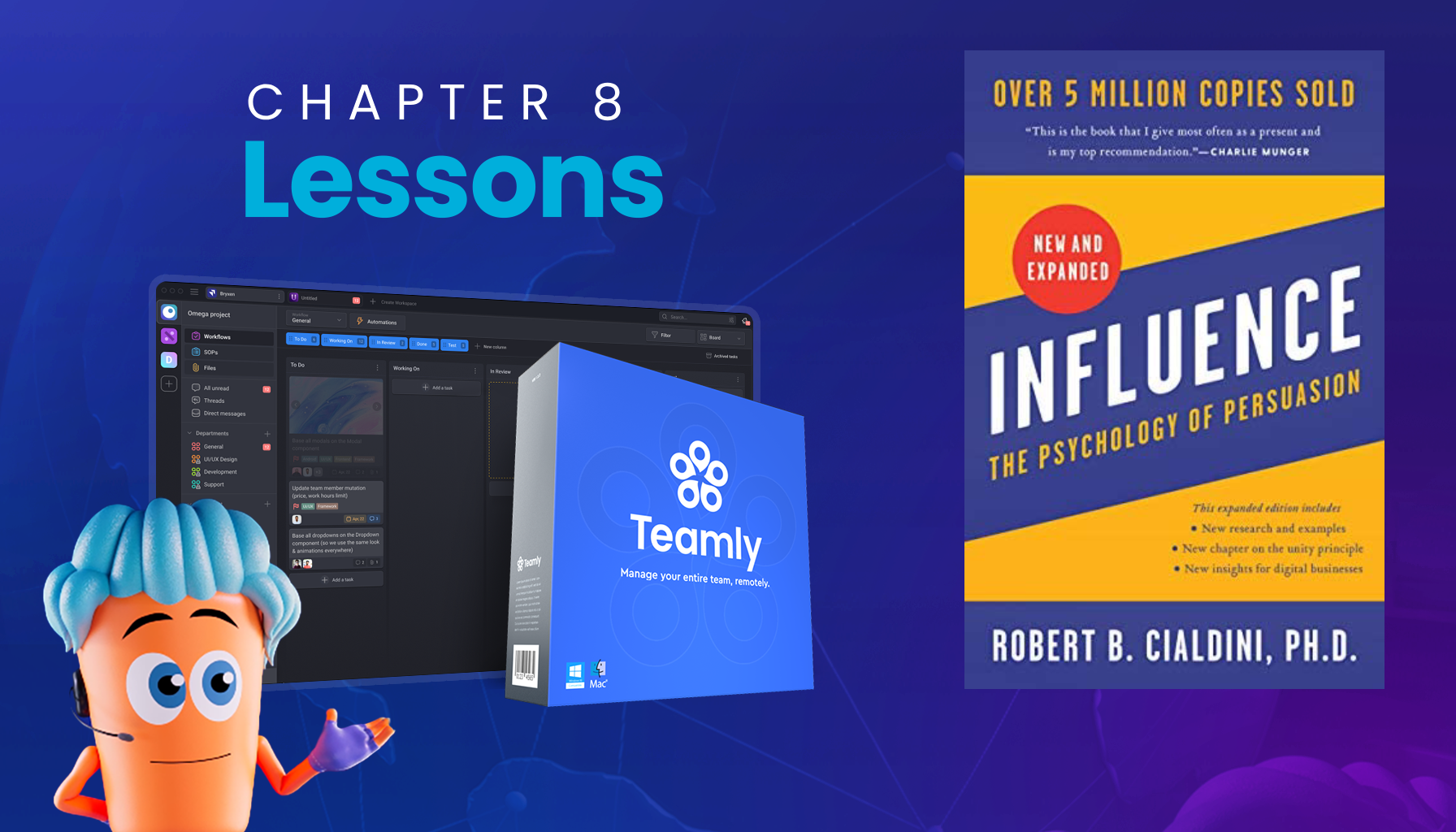
Click the button to start reading
How to Optimize Your Online Tutorials for SEO and Discoverability
You’ve poured hours into crafting a high-quality online tutorial—scripted it out meticulously, recorded footage, edited with flair, and packaged it all up in a user-friendly format.
But here’s a question: how will anyone find it amid the vast sea of online content? That’s where search engine optimization (SEO) and discoverability come in.
By applying smart SEO strategies, you can boost your tutorial’s visibility in search results, attract more viewers, and ensure your target audience gets the help they’re looking for.

The Vital Role of SEO in Tutorial Creation
At first glance, SEO might sound technical or overwhelming. You’re likely thinking it involves keywords, meta tags, and endless algorithm hacks.
While there’s some truth to that, effective SEO is simply about making your content more accessible to both search engines and real people.
When your tutorial is properly optimized, you’re not just courting web crawlers; you’re also providing a better experience for your viewers.
At its core, SEO means you’re framing the tutorial in a way that people can effortlessly find and understand. You’ll be creating logical structures, using relevant keywords, and making sure your content is tailored to match the intent of those searching for solutions.
Why Discoverability Matters
If SEO is about positioning your tutorial to rank high in search results, discoverability is about extending those efforts beyond search engines alone.
It encompasses all the ways people might come across your tutorial—like social media platforms, community forums, and recommended videos on YouTube.
The goal is to make sure that if someone wants to learn a particular skill or solve a specific problem, your tutorial has a strong chance of popping up right when they need it.
Begin with In-Depth Keyword Research
Think of keywords as the tiny beacons guiding your tutorial content to the right audience. When you identify what specific terms or phrases your audience uses, you’re effectively bridging the gap between “great content” and “the right viewers.”
Use tools like Google’s Keyword Planner, Ubersuggest, or SEMrush to find the phrases that match your topic. Aim for a balance between relevance and search volume.
For example, a broad keyword like “online tutorials” might have high search volume but also fierce competition. Instead, consider long-tail keywords that drill down more specifically—like “online guitar tutorials for beginners” or “advanced SEO tutorials for e-commerce.”
These phrases might have fewer searches, but the viewers who use them are typically ready to dive deeper into your content.

Optimize Your Tutorial Content for On-Page SEO
Once you’ve identified your target keywords, the next step is weaving them seamlessly into your tutorial content. This is where on-page SEO comes into play, ensuring that search engines can clearly grasp the focus and value of each piece of content you publish.
Here are the essentials:
- Title and Headings: Make sure your focus keyword or phrase appears in the main title and at least one subheading. This signals to search engines that your tutorial is relevant to a specific query.
- Meta Descriptions: Write concise yet enticing meta descriptions. A well-crafted snippet encourages people to click on your tutorial link, boosting your click-through rate and potentially improving your search rank.
- Keyword Placement: Insert your primary keyword in the first 100 words of your text. Beyond that, naturally incorporate it throughout your content, ensuring it fits contextually rather than feeling crammed.
- Supporting Keywords: Don’t just rely on the main keyword. Use synonyms or closely related phrases for a more comprehensive approach.
- Readable URLs: If you can customize your URL, keep it short and descriptive. Include the relevant keyword or topic in the URL path so search engines and users can understand what your tutorial covers at a glance.
Balance Clarity with Keyword Usage
A key part of SEO success is nailing that sweet spot where you use enough relevant keywords without making your text awkward or repetitive.
If your tutorial focuses on how to master Photoshop, for instance, you should naturally reference “Photoshop” throughout—but not so much that it feels forced. Write in a clear, engaging style and place keywords where they fit organically. Search engines are smart, and they reward content that genuinely helps readers.
Structure Tutorials for Maximum Engagement
Search engines pay attention to user signals like time on page and bounce rate. If people quickly leave your tutorial, that’s a sign it might not be delivering the promised value.
On the flip side, a well-structured, engaging tutorial can keep visitors on your page longer, signaling search engines that your content is worth ranking.
Here’s how to structure your tutorial in a compelling way:
- Introduction: Tell viewers exactly what they’ll learn or accomplish by the end of your tutorial.
- Step-by-step Approach: Break complex tasks into smaller, digestible steps. This makes your content scannable and easier to follow.
- Illustrative Examples: Show, don’t just tell. Use screenshots, images, or brief demos that clarify important points.
- Summary or Recap: Wrap up with a quick overview and mention the next steps or additional resources they can explore.
A logical and user-focused structure not only improves viewer retention, but also helps search engines parse your content more effectively.

Video SEO: Optimizing Tutorials for YouTube and Beyond
If your tutorial has a video component—perhaps hosted on YouTube or Vimeo—optimizing for those platforms can significantly broaden your reach. YouTube, in particular, functions like a secondary search engine, where the same principles of keyword optimization and user engagement apply.
For YouTube:
- Titles and Descriptions: Use targeted keywords early in your title and repeat them naturally in your description. This alignment will help you rank for those queries.
- Tags: Add relevant tags, including both broad and niche terms, to give YouTube a clear understanding of your content’s subject matter.
- Captions: Always include accurate captions or transcripts. Not only is this crucial for accessibility, but it also gives YouTube additional text to analyze for relevance.
- Engagement Signals: Encourage viewers to like, comment, and subscribe. High engagement shows YouTube’s algorithm that your content is valuable, pushing it higher in search and recommendation feeds.
Outside of YouTube, the same general principles apply. If you host on Vimeo or a self-hosted platform, be sure to optimize titles, descriptions, and any associated tags or categories.
Off-Page SEO: Boosting Credibility Through Links and Social Shares
Search engines see external links pointing to your tutorial as votes of confidence. If authoritative sites share or reference your tutorial, it signals that your content is trustworthy and valuable. This is known as off-page SEO.
Strategies to build these all-important backlinks include:
- Guest Blogging: Contribute articles to reputable sites in your niche and link back to your tutorial.
- Community Engagement: Participate in forums, discussion boards, or social media groups. Offer expert insights and share your tutorial when it genuinely helps the conversation.
- Influencer Collaboration: Partner with influencers or thought leaders. If they like your content, they may share it with their network, driving new viewers to your tutorial.
- Resource Lists: Many websites compile lists of top tutorials or must-read resources. Pitch your content as a worthy inclusion.
Additionally, encourage people to share your tutorial on social media by including clear share buttons and calls to action. The more your link gets circulated, the greater chance you have of climbing those search rankings.

Leverage Analytics to Refine Your Strategy
SEO isn’t a one-and-done exercise; it’s an ongoing process. You’ll want to monitor how well your tutorial ranks, which keywords are driving traffic, and where viewers tend to drop off. Tools like Google Analytics and Google Search Console provide valuable insights into what’s working and what needs tweaking.
Ask yourself questions like: Are people engaging with the entire tutorial or leaving halfway through? Are certain keywords generating more organic traffic than others? By analyzing these metrics, you can fine-tune your approach. Maybe you need to restructure the pacing, add more visuals, or improve your video thumbnail to increase click-through rates.
Highlighting the Power of Teamly
When you’re juggling multiple tasks—researching keywords, collaborating with influencers, testing new video optimization tactics—staying organized is essential.
That’s where a platform like Teamly can come into the picture. Teamly helps coordinate projects with your team, track progress, and ensure everyone is working in sync. By streamlining your workflow, you free up more time to create engaging content and experiment with innovative SEO strategies.

Putting It All Together: A Holistic View of SEO and Discoverability
Optimizing your online tutorials for SEO and discoverability demands a blend of art and science.
It’s about being strategic with keywords, but also maintaining authenticity in how you educate and guide your audience. It’s about studying analytics to evolve your tactics, but also remembering the human connection your content should foster.
From well-structured tutorials and targeted keywords, to backlink building and social sharing, every part of the puzzle fits together to boost your online presence.
Your final goal is to make your tutorials easily found by those who are searching for exactly the expertise you offer.
By applying these optimization strategies, you establish yourself as a reliable source, encourage positive engagement, and ultimately help more people achieve their learning goals.
So take a close look at your tutorials and ask: are they structured, keyword-focused, and user-friendly?
Are you leveraging video platforms like YouTube with strong titles, descriptions, and captions? Have you created shareable content that sparks conversation and invites engagement? If the answer is “not quite,” then you now have the roadmap to bring everything up to speed.
In the ever-evolving world of online content, SEO and discoverability aren’t just nice extras; they’re the difference between a hidden gem and a tutorial that reaches the masses.
Embrace these strategies, refine them over time, and watch as your tutorials take center stage in the digital spotlight.
















